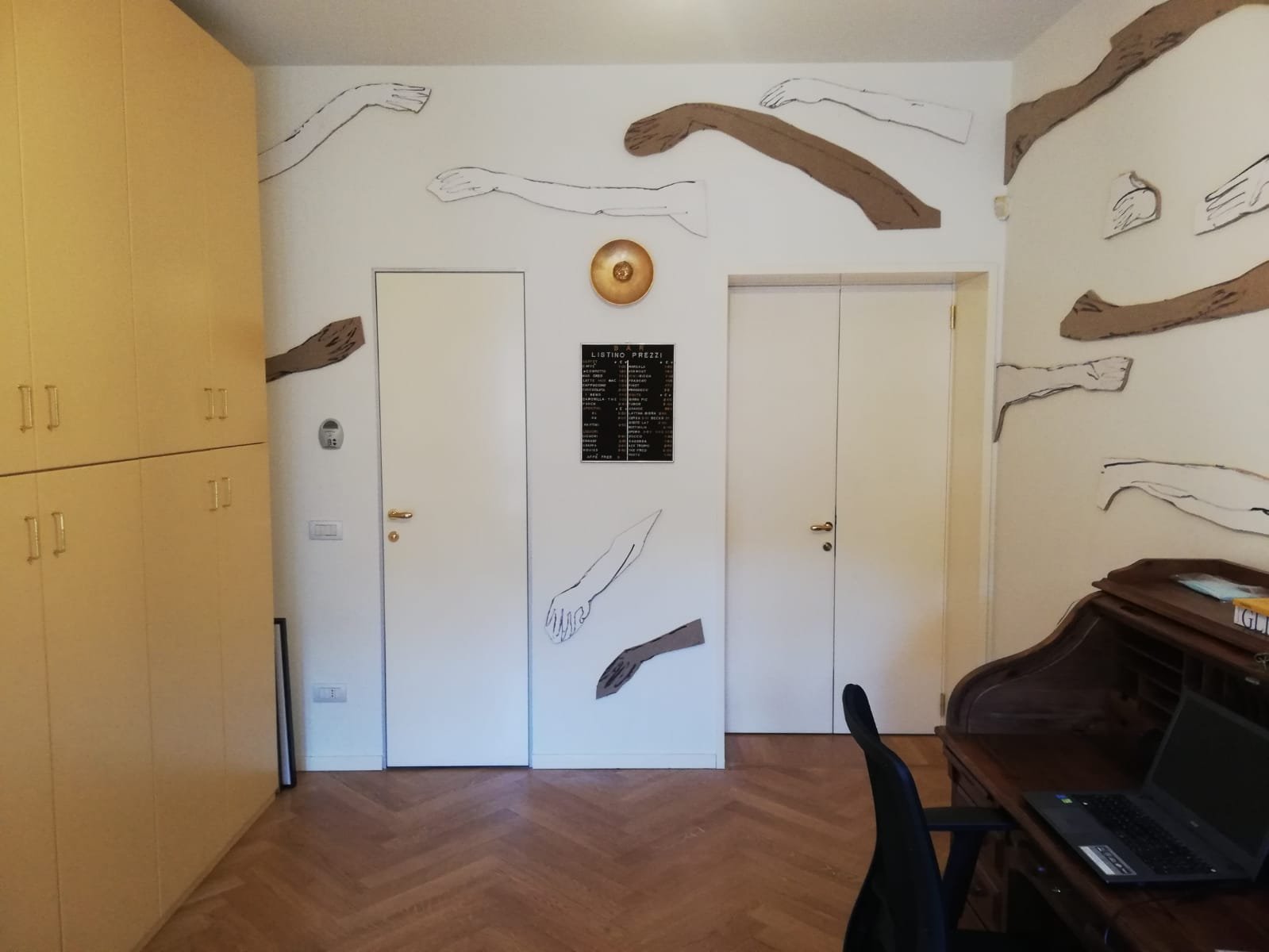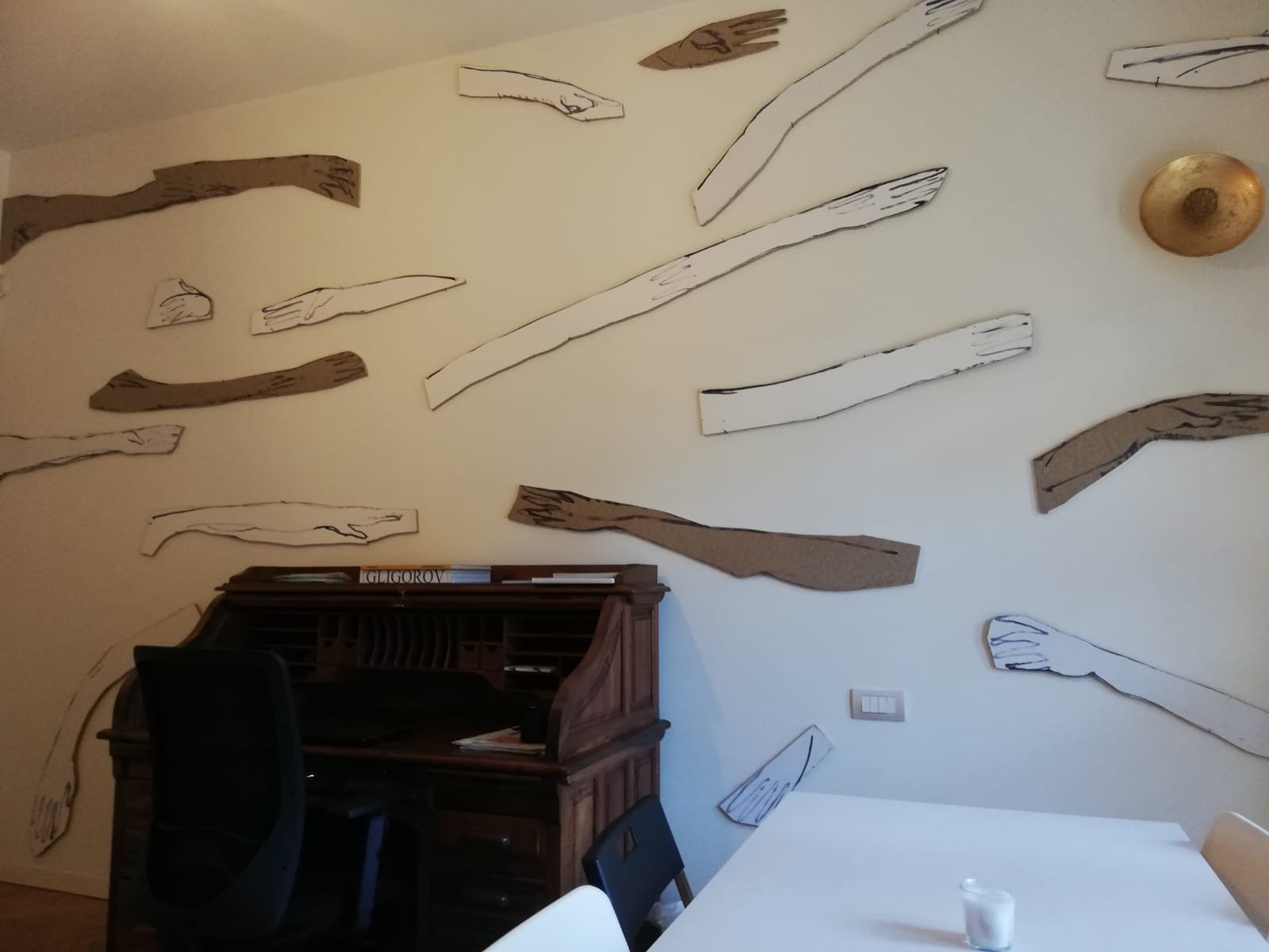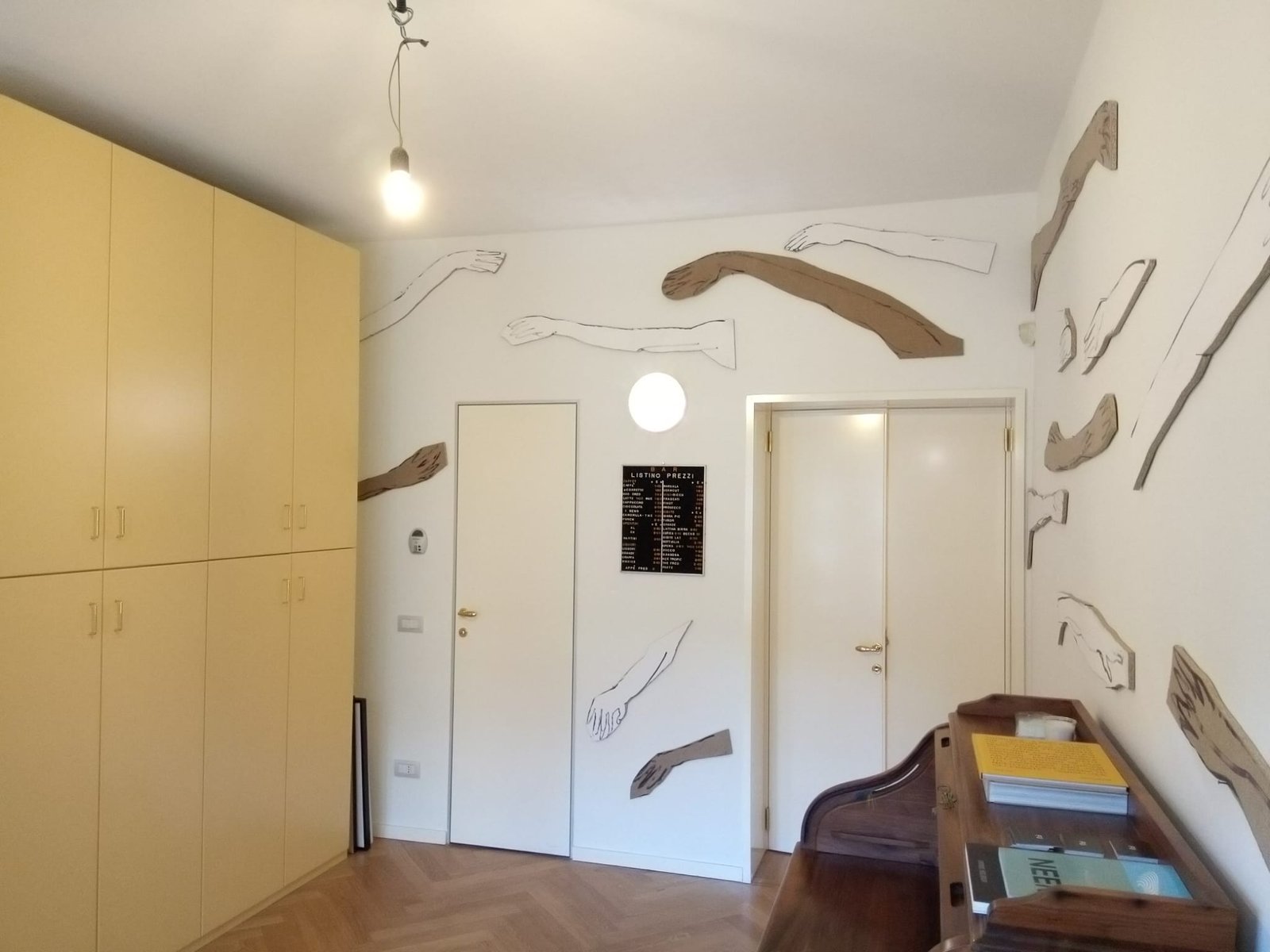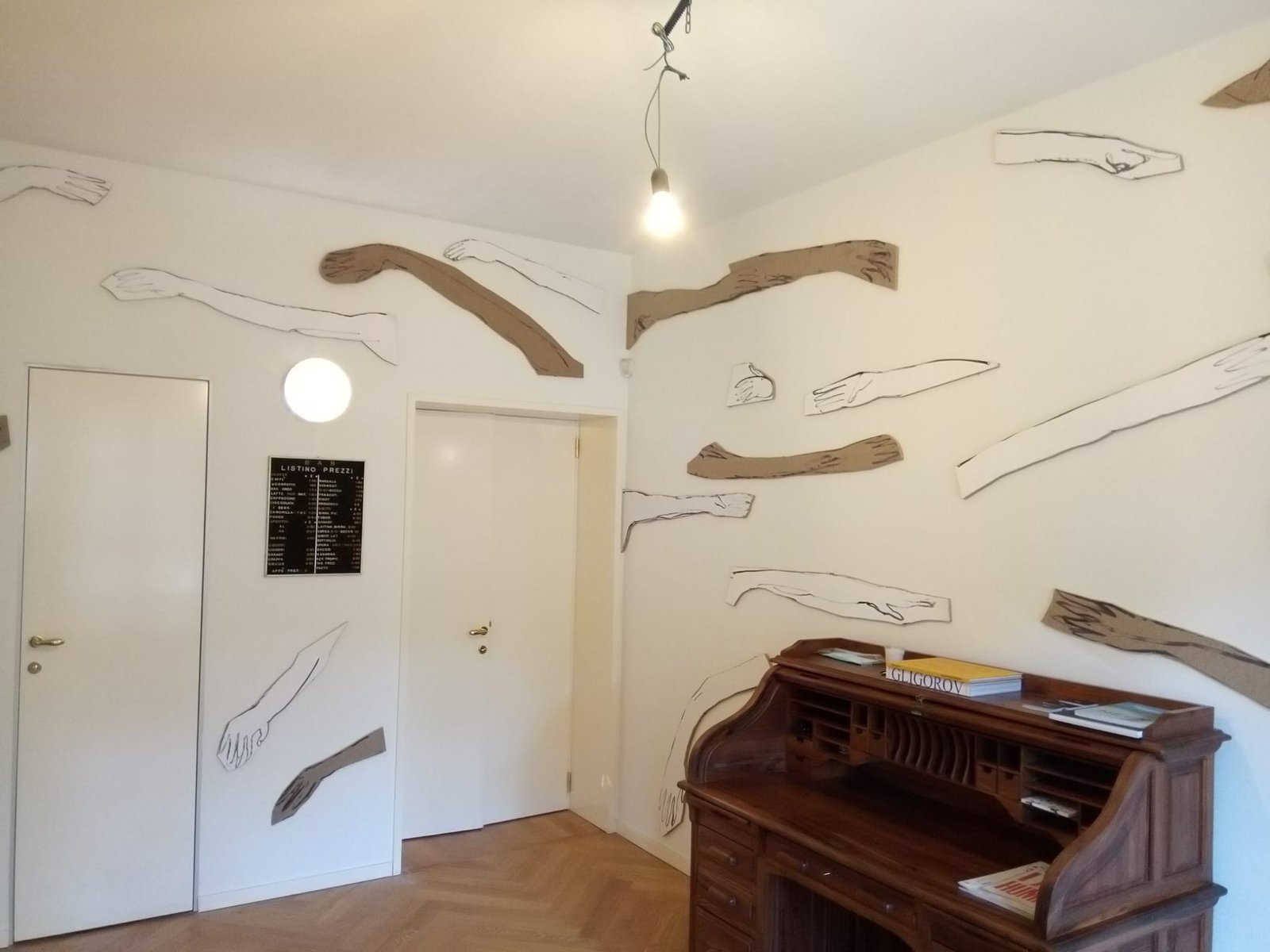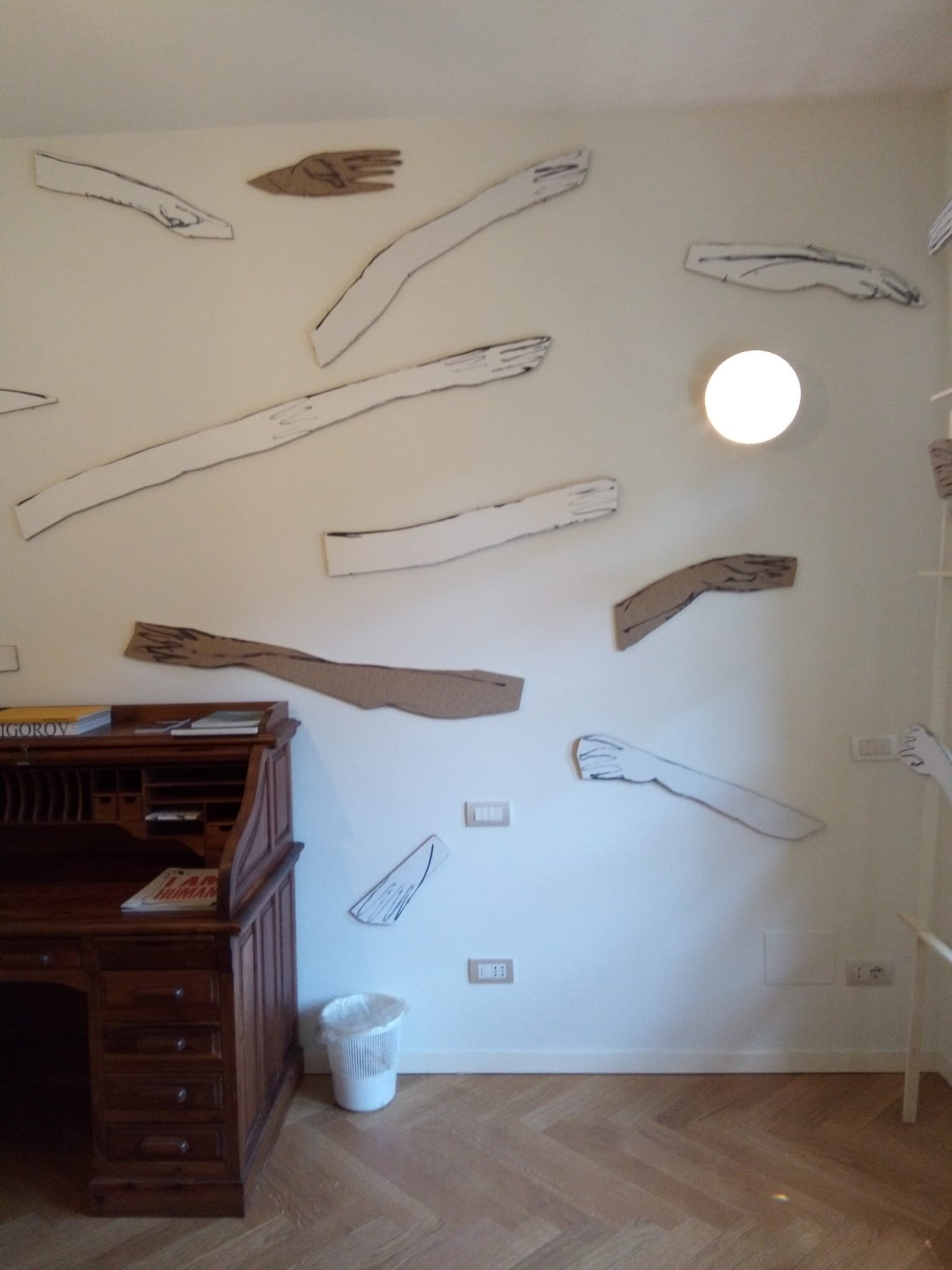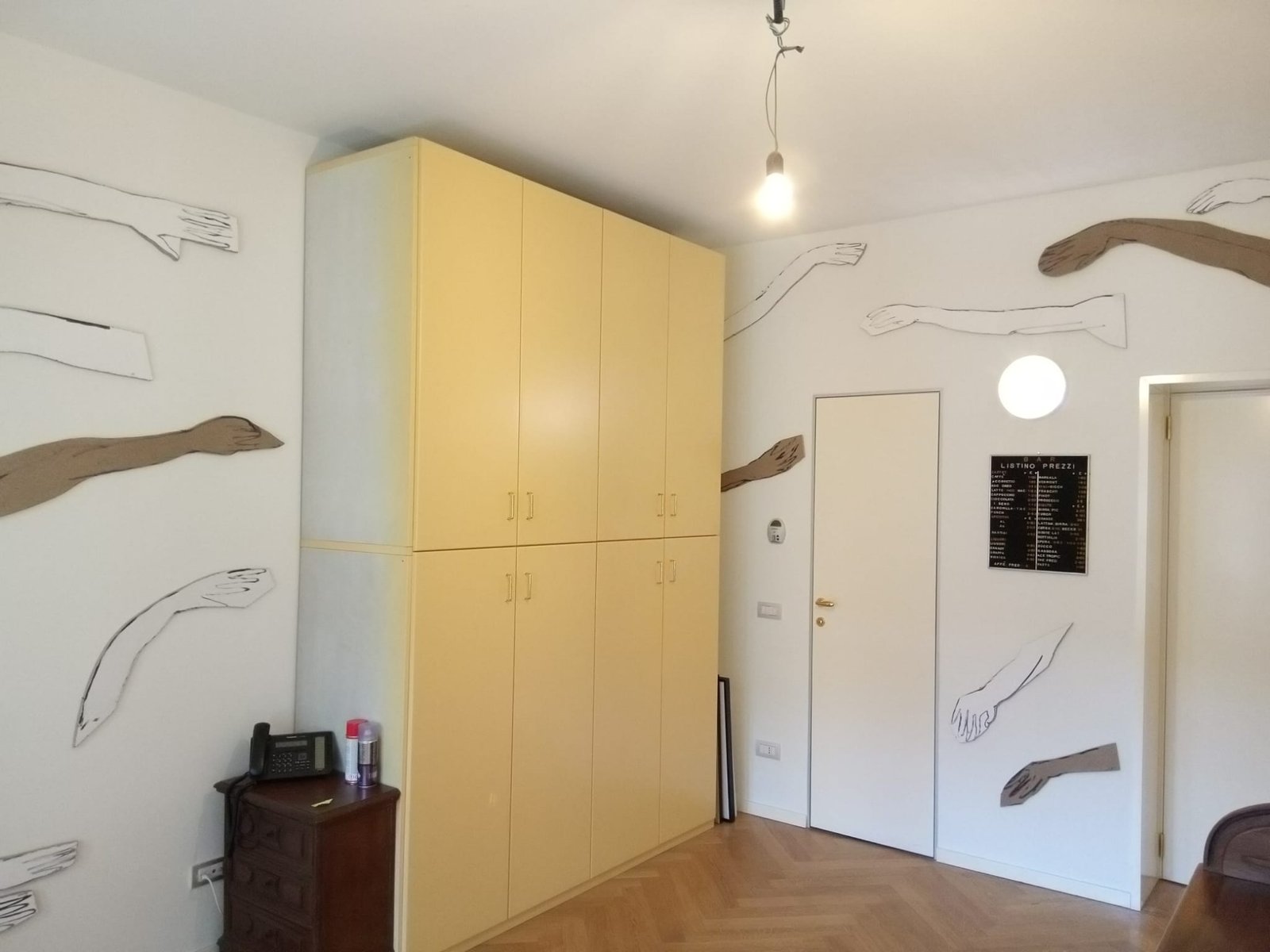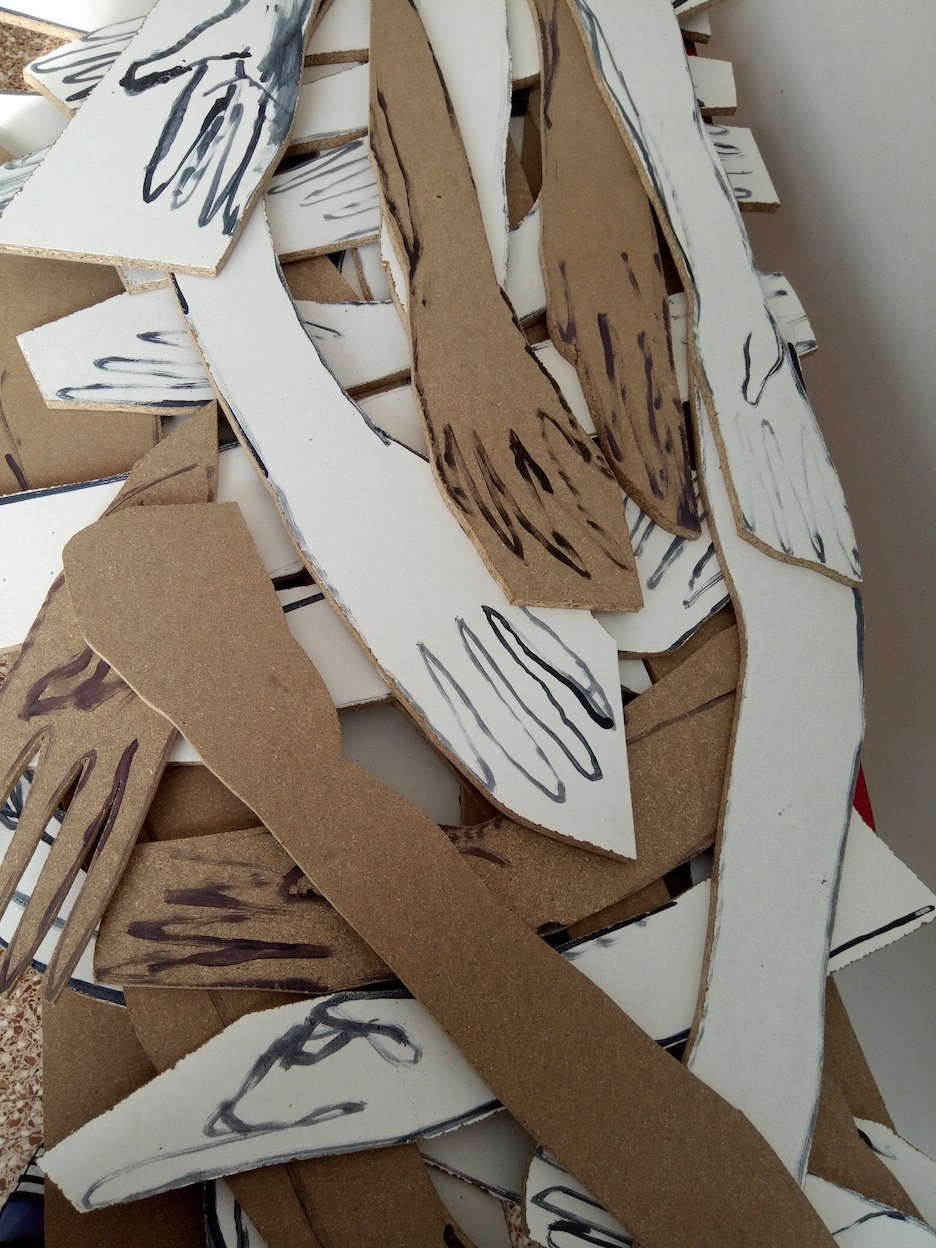EMPORIO CENTRALE
A site-specific project by Andrea Barzaghi in the headquarters of Forme Uniche by Giuseppe Amedeo Arnesano and curated by Stefania Margiacchi (Société Interludio)
Imagine an editorial office which, for its very nature, presents itself as a place of research, nomadic and shared. Now think about, site-specific artworks in this defined space, coexisting with it: both in the “real” and in the “virtual” world the work takes shape and tries to mold itself with respect to its dual context.
Now project into it floating limbs leaning on the walls.
They stand as approximate units of length – how the perception of distance changes according to the place. These limbs lengthen and shorten according to where they are located, making time and its perception malleable. Moving on parallel trails, they tend to speed up and slow down at the same time, up to the point of stasis, which have however a frenetic nature. They are recognizable but not realistic, far from any anatomical connotation, as if they were moving in a mimetic world that saves the excluded ones – not from shoulder to elbow but from elbow to hand.
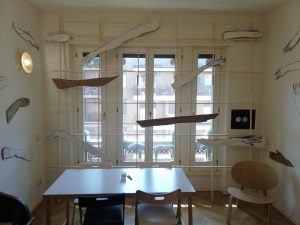
Andrea Barzaghi Emporio Centrale
They are chipboards, arising in two-dimensional compositions of drawing and painting which then detach from the surface of the canvas to open into space, leaving the function of purpose and becoming means: the attempt to reproduce time (as in painting) is no longer a struggle, but necessarily it becomes the art of time.
The arms are coordinated axes tended towards motion – but not necessarily towards a destination.
They are thus signs – the synthesis of a gesture – and arrows indicating different directions.
Like those journeys that are both centripetal and centrifugal escapes, perspective trajectories, circular vortices looking for a foothold in space. And again: migratory movements, synthesized humanoids only in their upper limbs, seeking self-definition in movement.
And, in these imaginative trajectories, they create alternative paths that can connect distant destinations.
They are vectors of escapes but also invisible connectors of all possible trajectories that do not see definitive versions but, in their precarious nature, hint only at all possible worlds (and motions).
Going beyond the possibility of the eventual unforeseen, they empower a scenario of conjunction between Milan and Turin: in addition to railway tracks, airplane routes and motorways we have an alternative which overcomes the constraint of reduced mobility.
A new horizon opens up: one where the work of art is a connector of movement and conjunction. Milan-Turin are now just over 260,000 arms apart and are wagons, moving vectors and in their movement they allow art to be moved. A good not necessary but of socially useful.
Stefania Margiacchi
